Sealant
Laying the joint of the bathtub with a sealant is the simplest and most versatile way. It is suitable for joints no more than 1 cm. In other cases, you will have to choose another method or combine silicone sealant with other building materials - foam or cement.
To complete the joint you will need: degreaser or solvent, masking tape, syringe gun, sanitary silicone sealant, and a soft spatula or brush.
In the photo, the use of a sealant with a syringe
- Fill water in acrylic bath (skip this step for cast iron).
- Clean the surface from dirt and dust, degrease it.
- Cover the tiles and the surface of the bathtub with masking tape, leaving a corner of 5-7 mm.
- Insert the sealant into the gun, go over the joint in one go. Do not overcoat, this will result in surface imperfections.
- Remove excess with a spatula or brush soaked in soapy water and smooth the surface.
- Leave to dry for 24 hours, remove the tape, drain the water.
Important: During drying, do not use the bathroom for its intended purpose.
Corner
If you are decorating the walls in the bathroom with tiles, purchase a special insert with it - an inner corner made of plastic or aluminum. It is fixed close to the bathroom, and tiles are already installed on top.
The main advantages of this method are reliable sealing, hygiene, and aesthetic appearance. The disadvantage is that it is installed exclusively during repairs. In a finished bathroom, this method will not work.
You will need: corner, clerical knife or saw, tile glue, tile, grout. How to install the corner in the joint between the bathroom and the tile:
- Mark and cut the planks to the desired size.
- Apply tile adhesive to the wall.
- Install the corners.
- Insert the first row of tiles into the grooves of the glued corners, glue it.
- Put the rest of the rows, leave for a day.
- Decorate the joints with grout after the glue dries.
The photo shows an example of installing an inner corner under a tile
Polyurethane foam
The method of sealing the seam between the bathroom and the wall with the help of foam is used exclusively as a rough draft, because even a waterproof composition in the bathroom needs additional protection. This option is suitable if the joint between the bath and the wall does not exceed 3 cm. The advantages of the polyurethane foam include its ability to expand and dry. By cons - the need for extremely accurate work, because it is incredibly difficult to wash the composition from hands and walls.
To seal the joint between the bathroom and the wall, you will need: a mask, gloves, a degreaser, masking tape, waterproof foam, a syringe gun, a stationery knife.
Step-by-step instructions for the process:
- Spread film or newspapers on the floor.
- Clean the walls and sides of the bathroom, degrease.
- Apply paper tape around the surface to be treated.
- Put on gloves and a mask.
- Shake the can, then insert into the gun.
- Pour the foam into the joint quickly and gently, leave to dry completely.
- Cut off the excess with a clerical knife.
- Seal the joint from above using any decorative method.
Sealant is usually applied on top of the polyurethane foam, ceramic or plastic skirting boards are installed.
Cement mortar
For large gaps between the bathroom and the wall, a cement solution is used. The advantages of cement mortar include its low cost, ease of installation and reliability. Among the disadvantages are the need for waterproofing and an unattractive appearance. Like polyurethane foam, cement is a material for rough repairs in a bathroom. Tiles, plastic corners or curb tape are attached on top of it.
For the method of sealing with cement mortar, you will need: dry mix, water, spatula. If the gap is more than 1 cm, use temporary formwork or plastic mesh - they will prevent the mass from falling through. It is installed before the start of work, and after drying, it is removed.
- Clean the surface to which you plan to apply the cement.
- Dilute the mixture to a thick sour cream consistency.
- Moisten the bathtub surface and wall to improve adhesion.
- Apply the mortar with a spatula and tamp as it is added.
- Leave to dry completely.
Tip: For additional water drainage in the bathroom, lay out the cement at an angle and glue the tiles on top.
After the cement plaster has dried, it must be insulated with a water-repellent impregnation. Only then can the resulting joint be decorated.
The photo shows a rough finish of the joints in the bathroom
Tile grout
One of the easiest ways to seal the joint between the bathroom and the tiles is to use what you already have at home. Surely, after grouting the joints between the tiles, you still have a mixture. But be careful: this method is used only at joints no more than 0.5 cm.
Tip: For aesthetically pleasing overall look, use the same shade of grout as on the tile. Most often it is a contrasting classic white or any other in the color of the tile.
The only drawback of tile joints with grout is the appearance of rust, mold and dirt after a while. To avoid this, use the Fugue-Shine impregnation for inter-tile joints. It glazes the surface, makes it smooth, protects against moisture and stains.
The list of works for grouting gaps against the wall is the same as for joints between tiles. Prepare the mixture itself, water, container, rubber spatula and sponge. The correct procedure is:
- Clean the gap from dirt and dust.
- Dampen surfaces with water.
- Dilute a small amount of grout.
- Fill in the gaps with a rubber trowel. Hold it at a 45-degree angle and push as hard as you can, this is the only way you can seal the joint.
- Wipe off excess mixture with a damp sponge no later than an hour after completion of work.
If you are going to treat the gap with Fugue Shine, wait 72 hours until it hardens completely and apply the composition with a brush. Remove excess with a dry cloth.
In the photo, smearing the joint with grout
Ceramic or PVC border
To decorate the gap between the bathroom and the wall, borders are used on top. They are made of plastic or ceramic, the former are suitable for PVC panels, we will discuss them in the next section. The second ones are for tiles, let's dwell on them.
The disadvantages of skirting boards include the difficulty of replacing the bowl and the need for special tools for work. The main difficulty when installing ceramic borders is cutting to the desired size and cutting holes for pipes and plumbing. A grinder with a diamond blade will cope with this task best of all. In addition, you will need: a spatula, tile adhesive, sandpaper, a rubber or wooden mallet, and sealing silicone.
In the photo, decorating the joint with a ceramic border
Tip: to make the finished bath look beautiful, match the width of the borders to the width of the tiles and install them end-to-end.
- Clean and degrease the surface, wipe dry.
- Prepare the tile adhesive according to the instructions on the package.
- Start from the corner. Cut 2 adjoining elements at 45 degrees to each other, grind.
- Cover the curb turnover with adhesive, put it in place, remove excess.
- Repeat for the second part.
- Continue in the same spirit, adjusting the parts to each other in height with a mallet.
- After the glue is completely dry, it is recommended to walk to cover the joints with grout.
You can also make a ceramic skirting board yourself: to do this, cut the tiles into pieces of the desired height and install them according to the same instructions. It is convenient to apply this method on top of a slurry of cement slurry.
Plastic skirting board
The main advantages of modern plastic are inexpensive price, ease of installation, and aesthetic appearance. You can install this on top of any finish: paints, tiles, panels.
Before starting work, prepare masking tape, measuring tape or ruler, adhesive sealant, stationery knife.
- Clean and degrease the surface thoroughly.
- Glue paper tape to the wall and edge of the tub, backing off the width of the curb.
- Fill the joint with sealant, leave to dry.
- Cut the skirting boards to the desired dimensions.
- Stick with the same sealant or liquid nails.
- Install the plugs.
Wait 24-48 hours to dry completely before using the bath.
Self-adhesive tape
One of the fastest and easiest ways to finish the joint between the wall and the tub is with a cover tape. All you need is the roll itself and a spatula to form the corner (often included). Another advantage of curb tape is the sealant in the formulation, which saves time and money.
Step-by-step installation instructions:
- Wash and degrease the surface.
- Remove the protective film from a small area.
- Press the border with the adhesive side against the wall and bath, starting from the corner and forming the corner with a trowel.
Tip: To make the material more elastic, heat the curb tape with a hairdryer as you install it.
Photo gallery
The method of sealing the joints is selected based on the size and required material. Feel free to combine methods to get the best results.

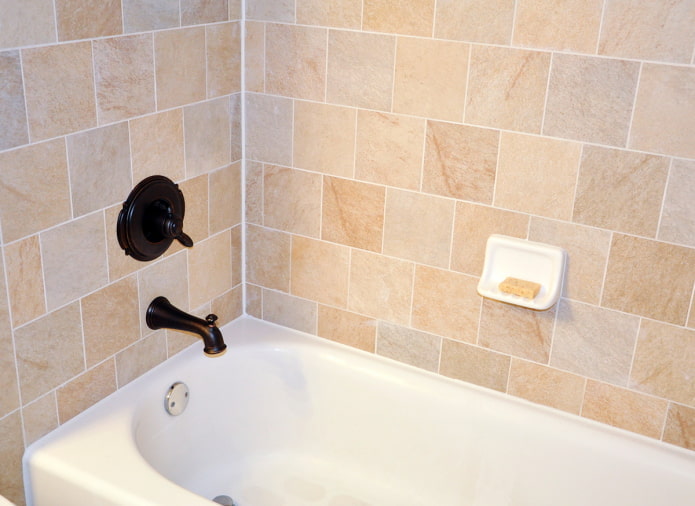
 10 practical tips for arranging a small kitchen in the country
10 practical tips for arranging a small kitchen in the country
 12 simple ideas for a small garden that will make it visually spacious
12 simple ideas for a small garden that will make it visually spacious
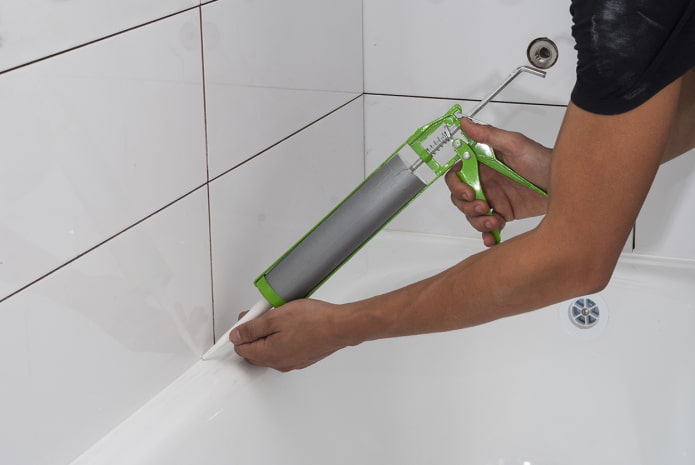
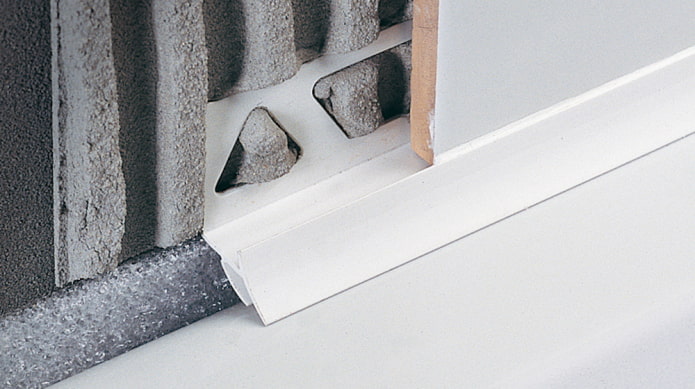

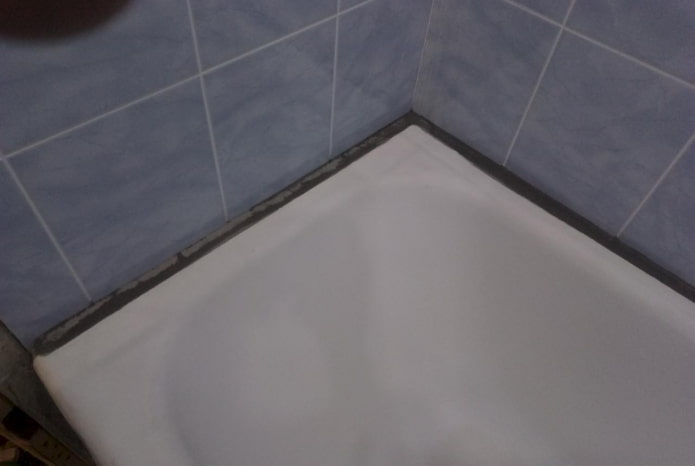
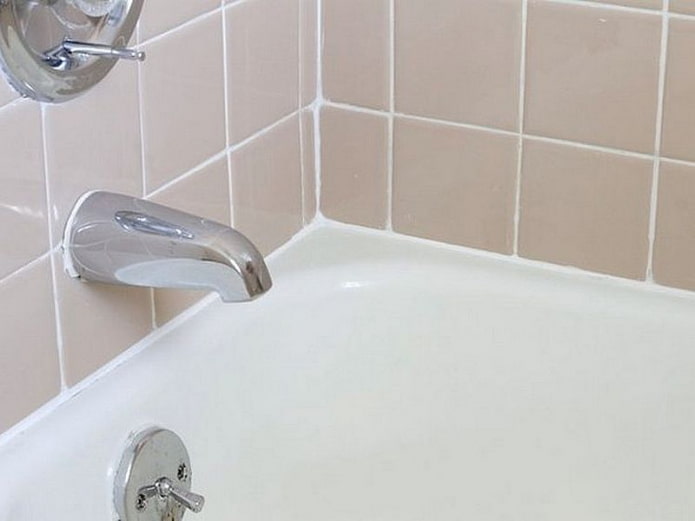
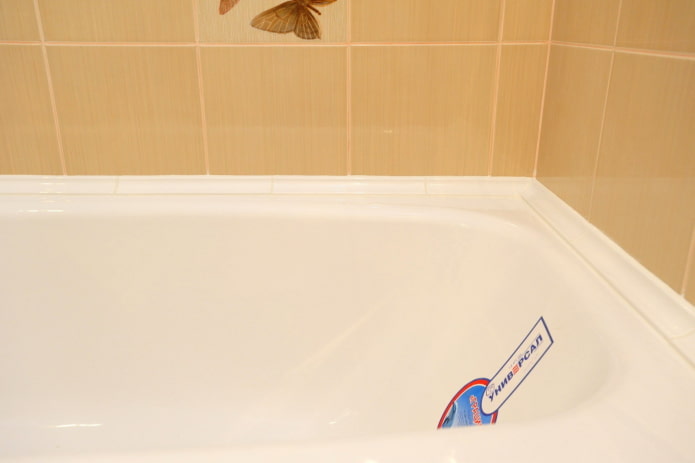
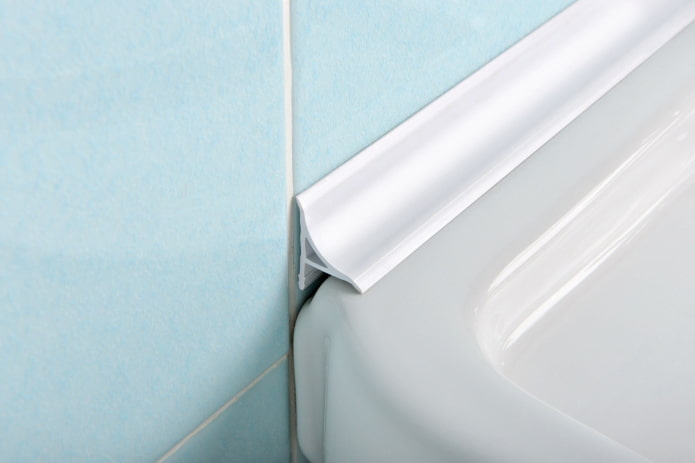

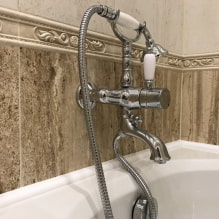
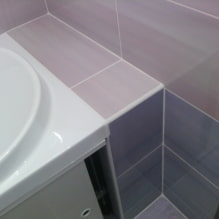

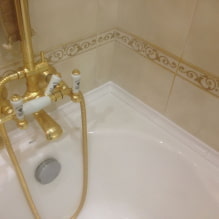
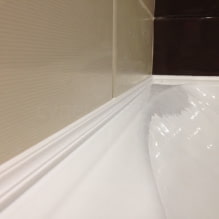
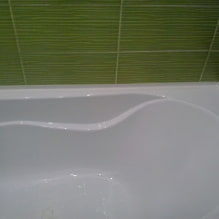

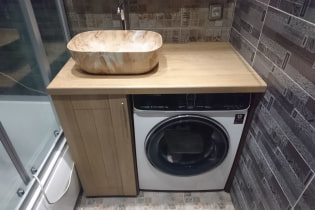 How to position the washing machine in a small bathroom?
How to position the washing machine in a small bathroom?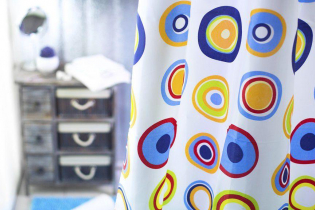 How to remove plaque from the bathroom curtain?
How to remove plaque from the bathroom curtain? 7 common mistakes in small apartment renovation that eat up all the space
7 common mistakes in small apartment renovation that eat up all the space Apartment layout: how not to be mistaken?
Apartment layout: how not to be mistaken? Wallpaper for the bathroom: pros and cons, types, design, 70 photos in the interior
Wallpaper for the bathroom: pros and cons, types, design, 70 photos in the interior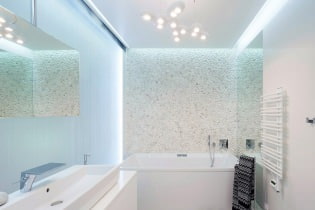 Modern bathroom interior: 60 best photos and design ideas
Modern bathroom interior: 60 best photos and design ideas